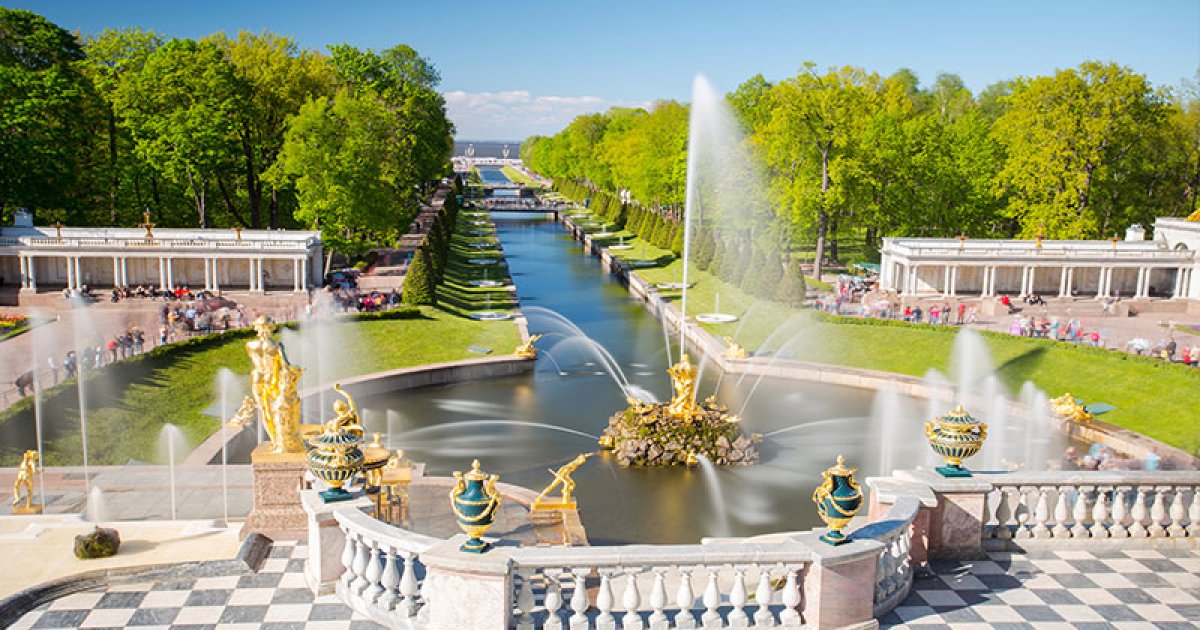PETERHOF, Grand Cascade
 Language: English / USA
Language: English / USA
Visitors to Peterhof cannot fail to be impressed by the Grand Cascade, one of the most extraordinary fountains in the world.
It was Peter the Great who had the idea of building a hilltop palace preceded by a marvelous array of fountains, grottos and sculptures. The tsar had the Grand Cascade built at the same time as the palace, and it was inaugurated in August 1723.
The waterfall is modeled on the one built for Louis XIV of France at his Château de Marly, but undoubtedly surpasses it in both size and magnificence.
Preceded by an elegant waterway, the signature feature of the work is the sculptural decoration glorifying the power of the Russian state and the fundamental victory in the Great Northern War.
All the sculptures were originally in gilded lead, but they were replaced around 1806 with others in bronze, inspired by works from antiquity and by the finest sculptors of the Renaissance, as well as masterpieces by the most talented Russian sculptors of the time. Today, the decorations comprise numerous gilded bronze statues, and marble vases, bas-reliefs, coats of arms, busts, dolphins, lions and frogs, for a total of 225 sculptures that combine with jets and gushes of water to give the Grand Cascade its lavish appearance.
An impressive achievement is that these fountains work without the use of pumps. The water is supplied by natural springs located in the hills 22 kilometers away; it is collected in reservoirs in the Upper Gardens and carried to all the palace’s fountains through 40 kilometers of waterways. The difference in elevation creates the pressure that allows the water to be supplied to most of the fountains of the Lower Gardens, including the Grand Cascade, whose waters flow into the large basin with the impressive Samson Fountain, sculpted by Mikhail Kozlovsky in 1730.
You’ll easily recognize it by the huge statue of the biblical hero tearing open the jaws of a lion. The most powerful jet of water of the entire Cascade shoots from the lion’s mouth. The sculpture symbolizes the victory of Russia over Sweden - represented by the lion featured in the Swedish coat of arms - in one of the most important battles of the Great Northern War, won on the feast day of Saint Samson.
An interesting fact: The statue of Samson is unfortunately a copy. Since the original weighed more than 5 tons, it was not possible to save it during the war, and it was probably melted down by the Germans to reuse the lead.



